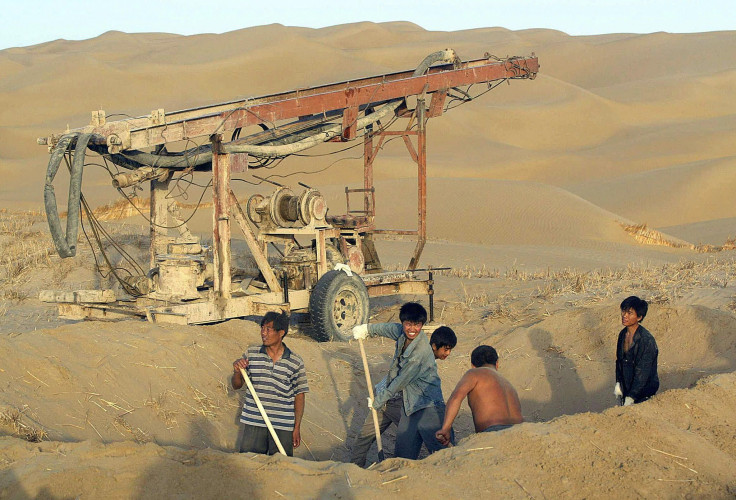Hidden Ocean Found Underneath China's Largest Basin Is Larger Than Five Great Lakes Combined

Chinese scientists have discovered what could potentially be a massive hidden ocean underneath the Tarim basin in northwestern Xinjiang, China, the South China Morning Post reported. The basin is one of the driest places on Earth, but the amount of salt water hidden underneath could equal 10 times the amount of water found in all five of the Great Lakes located in the U.S.
Scientists have suspected that the water is a result from high, nearby mountains, and that melt water from those mountains had slipped beneath the basin. “This is a terrifying amount of water,” said professor Li Yan, who led the study at the Chinese Academy of Sciences’ Xinjiang Institute of Ecology and Geography in Urumqi, the Xinjiang capital, the South China Morning Post reported. “Never before have people dared to imagine so much water under the sand. Our definition of desert may have to change.”
The Tarim Basin is the world’s largest landlocked basins and also home to China’s biggest desert, the Takla Makan Desert, which is situated in the middle of the basin and is presumed to be the world’s second largest-shifting desert.
Li’s team had accidentally discovered the water; they had actually been looking for carbon dioxide. Carbon dioxide can be absorbed in certain regions called “carbon sinks,” and scientists study those “carbon sinks” to better understand climate change. Li’s team had discovered 10 years that carbon dioxide had been disappearing into the basin, but could not understand why.
There could be ocean hidden under arid #Xinjiang #China holding "terrifying amount of water" http://t.co/LdGpm5PFBR pic.twitter.com/j5cSYwP9Vc
— Kristine Servando (@tinssoldier) July 30, 2015The team collected over 200 underground water samples from different areas in the desert, and by comparing the amount of carbon dioxide in the samples with the amount of carbon dioxide in the melt water, they estimated the amount of water that had flown into the basin.
Li said his team would work with other research teams to find out if similar “oceans” could potentially exist underneath other large deserts. He said that it is likely large amounts of water will be found underneath the deserts, because according to his team’s calculations, the amount of carbon the “oceans” have the potential to carry can reach a trillion tonnes, which is the same amount of “missing carbon” on the planet.
© Copyright IBTimes 2024. All rights reserved.






















